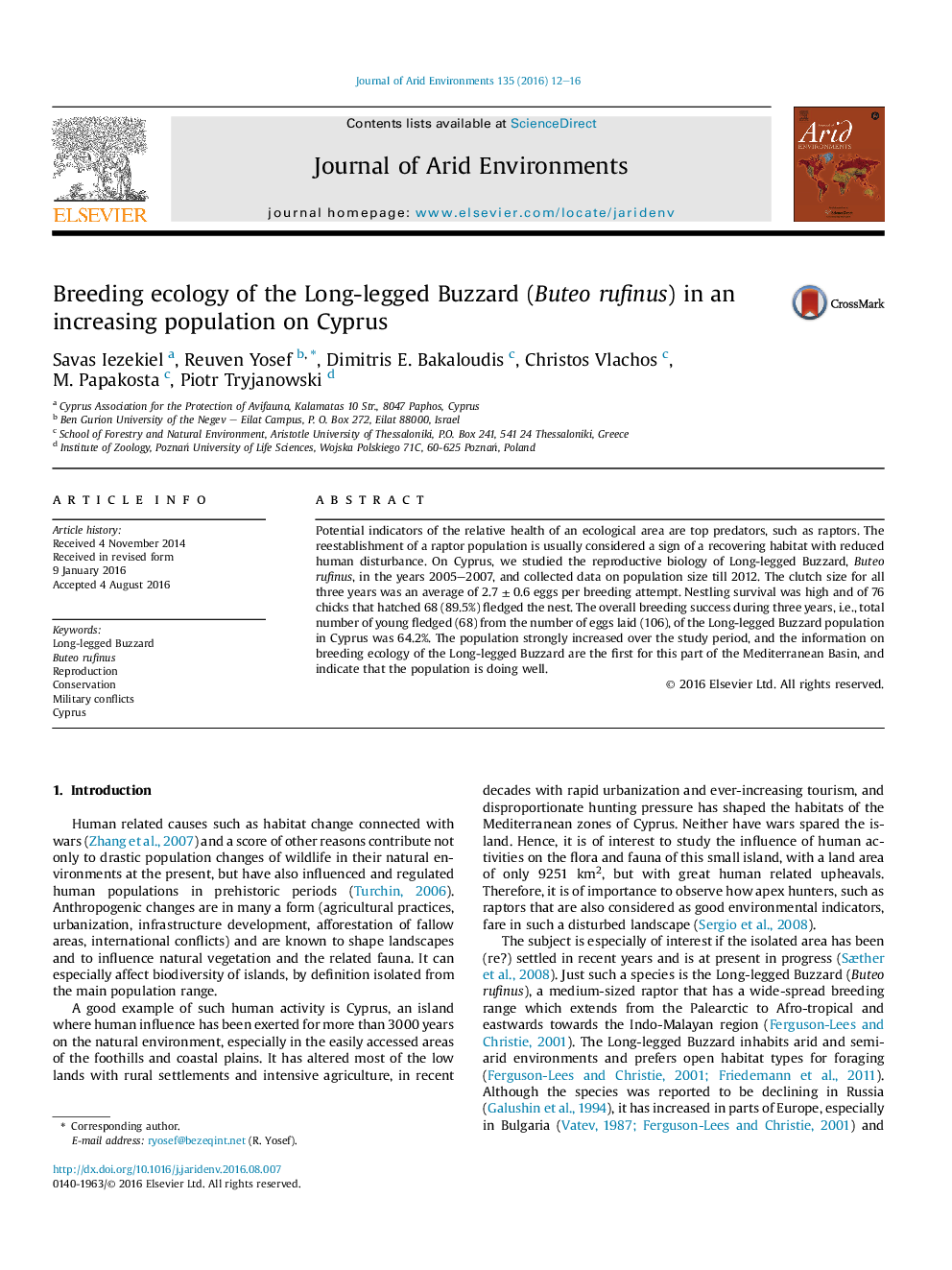| Article ID | Journal | Published Year | Pages | File Type |
|---|---|---|---|---|
| 4392666 | Journal of Arid Environments | 2016 | 5 Pages |
•On Cyprus, we studied the reproductive biology of Long-legged Buzzard, Buteo rufinus, in the years 2005–2007.•Clutch size for all three years was on average 2.7 ± 0.6 eggs per breeding attempt.•Nestling survival was 89.5%.•Overall breeding success was 64.2%.•Habitat preference for 30 territories showed they comprised of natural areas (52%) and agricultural landscapes (47%).
Potential indicators of the relative health of an ecological area are top predators, such as raptors. The reestablishment of a raptor population is usually considered a sign of a recovering habitat with reduced human disturbance. On Cyprus, we studied the reproductive biology of Long-legged Buzzard, Buteo rufinus, in the years 2005–2007, and collected data on population size till 2012. The clutch size for all three years was an average of 2.7 ± 0.6 eggs per breeding attempt. Nestling survival was high and of 76 chicks that hatched 68 (89.5%) fledged the nest. The overall breeding success during three years, i.e., total number of young fledged (68) from the number of eggs laid (106), of the Long-legged Buzzard population in Cyprus was 64.2%. The population strongly increased over the study period, and the information on breeding ecology of the Long-legged Buzzard are the first for this part of the Mediterranean Basin, and indicate that the population is doing well.
